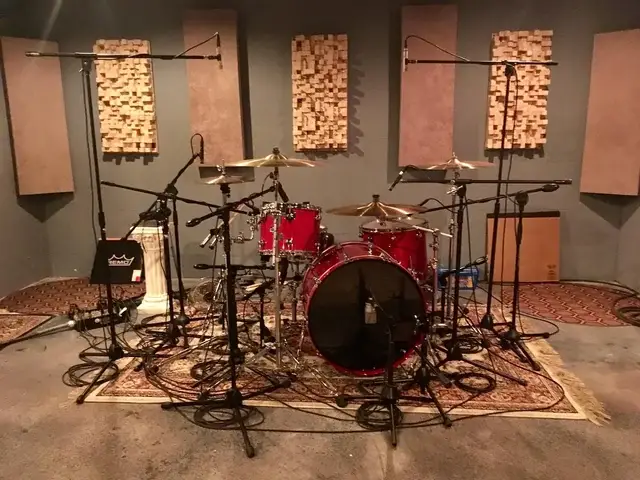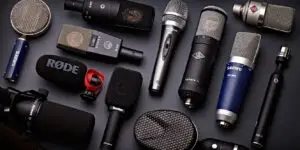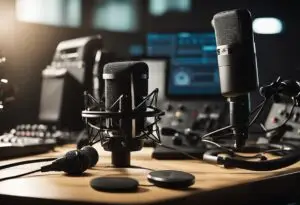Best Microphones for Drums, Guitars & Other Instruments: A Comprehensive Guide for Musicians
Finding the right microphones for instruments can greatly enhance a musician’s sound quality. The best microphones for drums, guitars, and other instruments provide clarity and depth, making them essential pieces of equipment. In this article, readers will explore various microphone options that suit different musical needs, ensuring they can achieve the best audio performance.

Microphones come in various types, and each has its unique strengths for specific instruments. Whether it’s capturing the explosive beats of a drum kit or the intricate nuances of an acoustic guitar, selecting the appropriate microphone can make all the difference in the recording process. This guide will help navigate the options available on the market today.
From budget-friendly choices to professional-grade gear, this article serves as a comprehensive resource for musicians looking to elevate their sound. Understanding the specific requirements of each instrument will lead to better decisions when it comes to microphone selection and usage.
Key Takeaways
- Selecting the right microphone is crucial for achieving high-quality instrument recordings.
- Different instruments require specific types of microphones for optimal sound capture.
- A variety of options are available, catering to different budgets and audio needs.
Top Microphones for Drums

When selecting microphones for drums, various types serve specific purposes. Dynamic microphones are often preferred for their durability, while condenser microphones excel in capturing detail. Clip-on and boundary microphones offer unique positioning options for diverse setups.
Dynamic Microphones
Dynamic microphones are the go-to choice for live performances and recording drums due to their robustness and ability to handle high sound pressure levels. Models like the Shure SM57 and Sennheiser e604 are popular options. The SM57 provides a well-balanced response and durability, making it suitable for snare and toms.
The e604 is particularly designed for microphones mounted on toms and comes with a clip for easy attachment. Dynamic microphones work well in noisy environments and can capture the aggressive transients of drums effectively.
Condenser Microphones
Condenser microphones are ideal for recording applications, as they capture wider frequency ranges and more detail. Models such as the AKG C414 and Rode NT5 are excellent choices. The C414 is versatile with multiple polar patterns, making it suitable for overhead miking and room capture.
The NT5, known for its affordability, offers a crisp sound, and is often used for overheads or as room mics. These microphones require phantom power and are sensitive, making them perfect for capturing the nuances of drum performances.
Clip-on and Boundary Microphones
Clip-on and boundary microphones provide flexibility in positioning and can be used in various drum setups. Models like the Audix D-vice and Shure MX395 are effective choices. The D-vice is designed to attach to drum rims, keeping the microphone close to the source while reducing unwanted noise.
The MX395 is a low-profile microphone that can be discreetly placed on surfaces like the drum head to capture sound from different angles. These microphones are excellent for capturing clear audio without obstructing the drummer’s movement.
Selecting Microphones for Guitars

Choosing the right microphone for guitars requires an understanding of the instrument type and its unique sound characteristics. Different mics will excel depending on whether the guitar is acoustic, electric, or bass.
Acoustic Guitars
When mic’ing acoustic guitars, the goal is to capture the instrument’s natural resonance. A condenser microphone is often preferred due to its sensitivity and ability to capture detail.
Popular Choices:
- Rode NT1-A: Known for its clarity and low self-noise, ideal for studio recordings.
- Audio-Technica AT2020: A reliable choice that balances price with performance.
The microphone should be positioned about 12 inches from the sound hole, angled slightly to avoid overwhelming low frequencies. Using a pair of mics in a stereo setup can produce a fuller sound, capturing depth and width.
Electric Guitars
For electric guitars, the choice of microphone can vary based on the amplifier and tonal goals. Dynamic microphones are commonly used for their durability and ability to handle high sound pressure levels.
Recommended Options:
- Shure SM57: A classic choice for live and studio settings, it captures the punchy mid-range well.
- Sennheiser e906: Designed for guitar amps, it provides versatility in tonal capture.
Positioning the mic close to the speaker cone delivers a more direct sound. Experimenting with mic placement can also significantly alter the tonal outcome, allowing for a personalised sound.
Bass Guitars
Capturing the depth of a bass guitar requires a careful approach. Dynamic microphones are often favoured for their robust handling of low frequencies.
Commonly Used Mics:
- Shure Beta 52A: Specifically designed for kick drums, it’s also effective for bass guitars.
- AKG D112: Renowned for its capability to capture the low end accurately.
Placing the microphone near the speaker, at a slight angle, can maximise bass response. Many engineers also consider adding a direct input (DI) alongside the mic to blend the best of both worlds—the direct sound and the amplified character.
Frequently Asked Questions

This section addresses common inquiries about microphones for drums, guitars, and other instruments, offering specific advice on selection and setup based on various contexts.
What type of microphone is most suitable for recording drums in a studio environment?
Condenser microphones are often preferred for recording drums in a studio due to their sensitivity and wide frequency response. They capture the nuances of the sound well, making them ideal for overhead miking. Dynamic microphones can be effective for close-miking drums, particularly for snare and kick.
How should I mic up a drum kit when performing live?
For live performances, a combination of dynamic and condenser microphones is common. Dynamic mics work well for snare and kick, while condenser mics can be used for overheads to capture the overall sound. Positioning mics correctly can reduce feedback and enhance sound clarity.
What are the most cost-effective drum microphone sets available?
Several brands offer budget-friendly drum microphone sets that provide good quality. Options such as the Shure DMK57-52 and the AKG D112 are popular for their balance of performance and price. These sets often include microphones tailored for various parts of the drum kit.
Can you recommend microphones suitable for both guitars and other instruments in a live setting?
For a versatile microphone suitable for guitars and other instruments, dynamic mics like the Shure SM57 excel. They can handle high sound pressure levels and provide clarity across various instruments. Condenser mics are another option, particularly for vocals and acoustic instruments.
What are the considerations for selecting a drum mic kit for church services?
When selecting a drum mic kit for church services, consider the acoustics of the space and the volume of the drumming. A kit should include mics that minimise feedback and interference. Durability and ease of setup are also important factors for consistent performance.
What are the best practices when setting up microphones for a drum kit to ensure optimal sound quality?
Placing microphones at appropriate distances from the drums helps achieve clear sound without distortion. Ensuring good phase alignment between mics can enhance the overall quality. Regular adjustment and testing during sound checks are essential to find the ideal balance.







